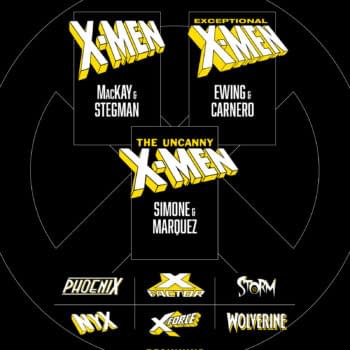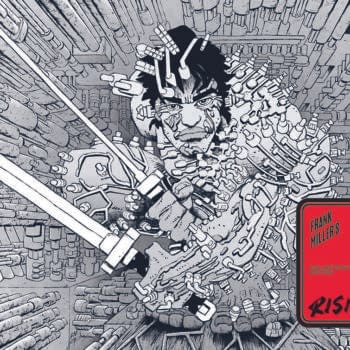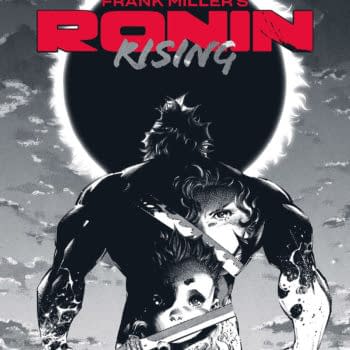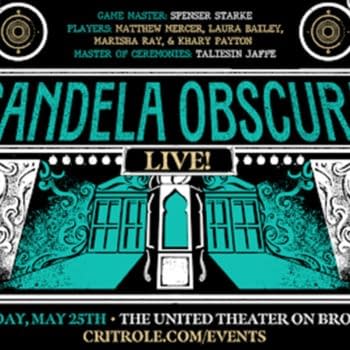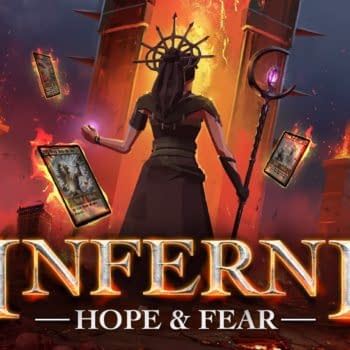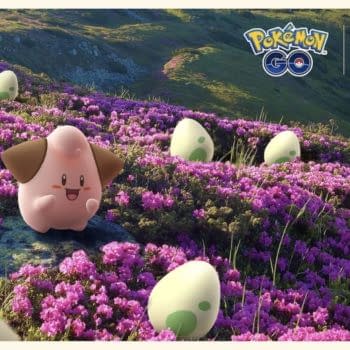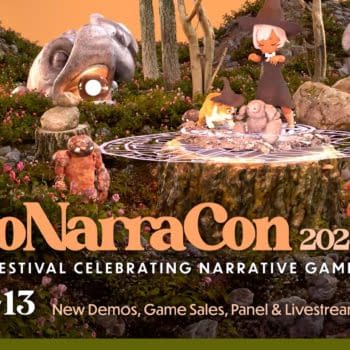Posted in: Games | Tagged:
What is This Yu-Gi-Oh Thing The Kids Go On About Anyway?
Toby Johnston writes for Bleeding Cool,
Yu-Gi-Oh!. The game that swept the nation, a year before I was born. I grew up on a healthy nerd diet of Pokemon and comics, just assuming that Yu-Gi-Oh! was another one of those MTG games I found boring. I was very, very wrong. In early 2017, I picked up a volume of the Yu-Gi-Oh! manga, and found myself intrigued. So having learned the actual rules (very different from the manga version it seemed) by reading the extensive rulebook, I got hold of some cards to begin. So, there I was, going to my local card shop to play. Shortly after, I realised I hadn't captured the idea of the actual, competitive game at all — I got destroyed! Now, fast forward to early 2018, and I'm here, frantically typing away, trying to educate literally anyone who cares at all on how to play a children's card game, whose main audience is not children.
So, what actually is Yu-Gi-Oh! (which will be shortened to Yugioh from now on for ease of typing)? Yugioh is a card game, themed loosely around the 6 anime series of the same name, which pits two "duelists" against each other in a strategic "duel". If you've played other card games before, and are expecting it to be in a similar style, prepare to be (mostly) amazed. The main thing that differentiates Yugioh from other TCGs is the obvious lack of a mana or resource system. This makes games faster and more about building an unbreakable board than playing a slow game. As such, unlike the grind games of Pokemon or Magic, games of Yugioh often only last 5-6 turns, and quicker games only last 2-3.
In Yugioh, there are 3 types of cards. Monsters, Spells and Traps. Each of these cards play an integral part of your Main Deck, and will be what makes up those 40-60 cards you play with during your games.
So, the Monsters. These guys (and girls…and, erm… Donuts?) will be the cards you bring into play by "Summoning" them to your "field" to attack your opponent's Life Points and protect your own.
Monsters can be Normal Summoned in face-up Attack Position or "Set" in face-down Defence Position from your hand to the Main Monster Zones. You only get 1 Normal Summon/Set per turn, but you can Special Summon as many times as you like.
All monsters in your Main Deck have a Level in the top right corner, which is represented by the Red and Yellow stars. Level 1-4 monsters can be Normal Summoned/Set for free from your hand, but monsters which are Level 5-6 need 1 monster to be sent to the Graveyard (Yugioh's glorified name for a discard pile or drop zone) as a "Tribute". Level 7+ monsters need 2 of these "Tributes" to Summon. This is because these monsters usually have more ATK (Attack) and DEF (Defence) and more powerful effects than lower-levelled monsters. You can also Special Summon monsters by effects of other monsters, Spells or Traps, and these monsters don't count towards your 1 Normal Summon/Set.
Speaking of effects, there are 2 types of Main Deck monsters, being Normal and Effect. Normal Monsters are Yellow, and, as the name kind of suggests, have no effects. Effect monsters are orange, and, surprise, surprise, have effects ranging from basic (Destroy 1 monster on the field) to incredibly useful (Destroy all monsters your opponent controls). I'll detail what ATK and DEF mean for your monsters later on.
There are also 2 sub-classes of Monsters, Ritual Monsters and Pendulum Monsters. Ritual monsters are blue, they can't be Normal Summoned, and some can't be Special Summoned by conventional means. Pendulum Monsters will be covered in the next update, as they represent a special Summoning mechanic which is a little too detailed for the basic overview.
Spells are, in some aspects, the most useful card type in the game. Often, Spells have powerful effects and enable a lot of your go-to plays. Unlike the lower variety of Monster Cards, Spells have the most sub-classes of all 3 card types! In this category, there are Normal Spells, Quick-Play Spells, Continuous Spells, Ritual Spells, Equip Spells and Field Spells. However, despite their variety, they are all activated in the same way. First, you place it from your hand, to the Spell/Trap Zone. Then, pay the "Cost" (This is what comes before the semi-colon in the card's text). If there isn't any cost, then the Spell can be activated for free. Due to Yugioh's lack of a mana system usually seen in card games, the Cost is usually paid from your Life Points or hand, as those are the only two limitations in the game.
Normal Spells (along with Continuous, Ritual, Equip and Field Spells) can only be played during your Main Phase, as they are the slowest of all card types. This is called Spell Speed 1. Unlike the name suggests, Spell Speeds apply to Monsters, Spells and Traps. This will be detailed later, but it is an important thing to keep in mind for the power level of these cards. Quick Play Spells are designated by a small lightning bolt in the top-right corner and are Spell Speed 2. This means that they can be activated in response to something else (again, this will be detailed later). Continuous Spells (differentiated by an infinity symbol in the top-right) are much like Normal Spells, but stay on the field to continue providing an effect. Equip Spells' only cost is a specific type of monster they can be equipped to, and they are distinguished by a cross in the top-right corner. Field Spells have a different type of cross (some sort of compass) in the top-right, and are essentially Continuous Spells which are placed in the Field Zone(more on Zones later). Finally, Ritual Spells. These are the most complicated of Spells, as they comprise an entirely different Summoning mechanic. Basically, if you have the Ritual Spell and the specific Ritual Monster in your hand, you can activate the Ritual Spell. This lets you Tribute monsters on the field or in your hand whose Levels equal or exceed the Level of the Ritual Monster, so you can Summon that Ritual Monster onto the field. This Summon is treated as a Special Summon, so it doesn't limit your 1 Normal Summon/Set per turn!
Finally (I know, I've droned on a bit), the Traps. Unlike Spells, they are not immediate. Unless specified as otherwise, Traps have to be Set face-down in the Spell/Trap Zone for 1 turn until they can be activated. Because of this restriction, they have an upside against Spells and most monster effects: they can be activated on your opponent's turn! This allows for some devastating counterplay, especially since Setting them means that your opponent doesn't know what the card does. However, in the current game of Yugioh, Traps are mostly unused, because, due to the lack of a mana system etc, the game is very fast, making Traps only really useful going 1st.
Due to the lack of a resource system, Yugioh's only commodity lies in card advantage. For example, if you discard a card to activate an effect, that gives you a -1 in card advantage, and the same goes for losing a monster from your field. Even activating a Spell/Trap is technically a -1, because it goes from your hand or field to the Graveyard. However, if you add a card from your Deck to your hand, that gives you a +1 in card advantage, and the same goes for Summoning a monster from your Deck.
In relation to certain topics I brought up earlier, here is the Yugioh 'field' or game board. Keep in mind, certain topics such as the Extra Monster Zone and the Extra Deck, won't make sense right now, but in a later installment, they'll be explained somewhat!
So, to wrap this up here, Yugioh is a much faster game than most typical TCGs, lacking a mana system or really much way of limiting your extension on the first turn. Because of this, there isn't much to stop a player from 'overextending' and going full-on crazy with the potential of a given hand. But to some of the people who play the game, that's one of the joys about it, that it is one of the games where often breaking a huge board is more fun than playing the slow game, and continuous turn passes. Now, I'll pass the turn to you, and start writing the follow-up, explaining more in-depth rulings and Summoning mechanics in detail.
Toby Johnston is a student in Nottingham who can only dream of being bitten by a radioactive spider. His exposure to comics, games and geek culture as a whole originated when he met his uncle during his first weeks on the planet. Now, most of his time is spent between trading card games, building some sort of competitive Pokemon team, and devouring as many comics as Uncle Rich can throw at him. He's also finally catching up with Marvel, DC TV, Doctor Who and "classic" sci-fi films, which could take him a while.














